
Flights and favorite turf photos of 2023
I looked through my photos from this year and chose these as favorites. I’ve added a little commentary about each one. Some are educational, some sentimental, some illustrative, some poignant, some just pretty.
First, however, the flight map, which I like to do to remind myself where I went in the past year, and how far I traveled to get there. Click any of these photos to enlarge them.
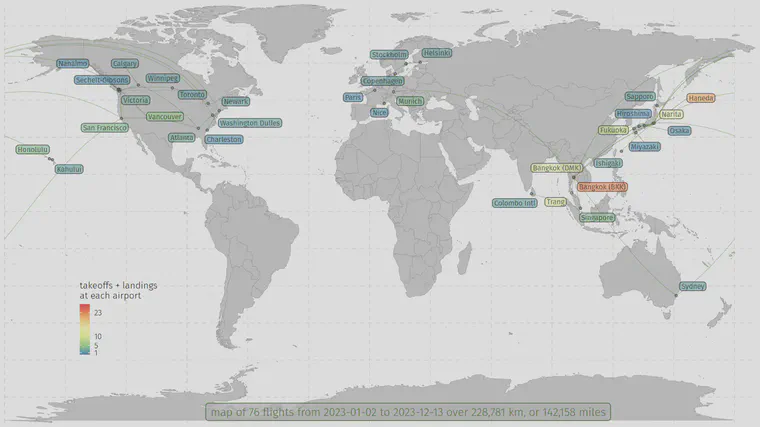
There were 76 flights over 228,000 km in 2023. That compares to 71 flights over 221,000 km in 2022.
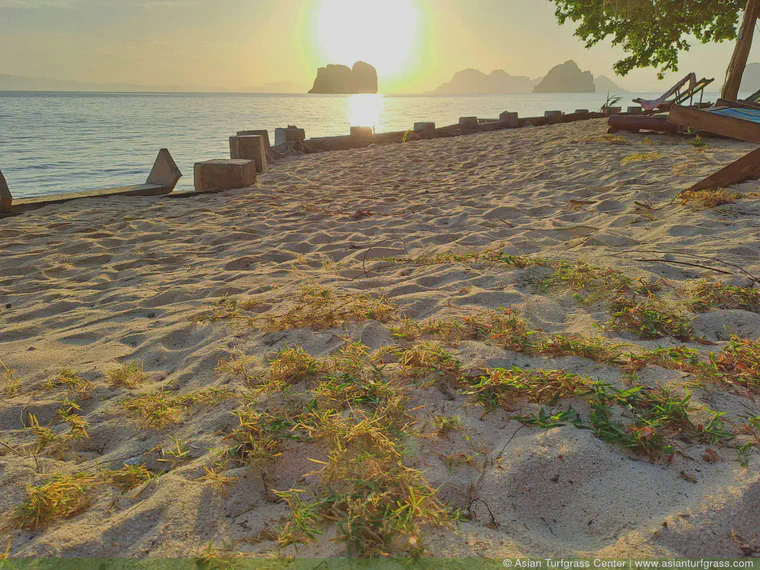
The grasses here are tropical beachgrass (Thuarea involuta) and a little bit of manilagrass (Zoysia matrella). For more about the types of grasses you can see here, check out this video: A botanical walk on a tropical Thai island.
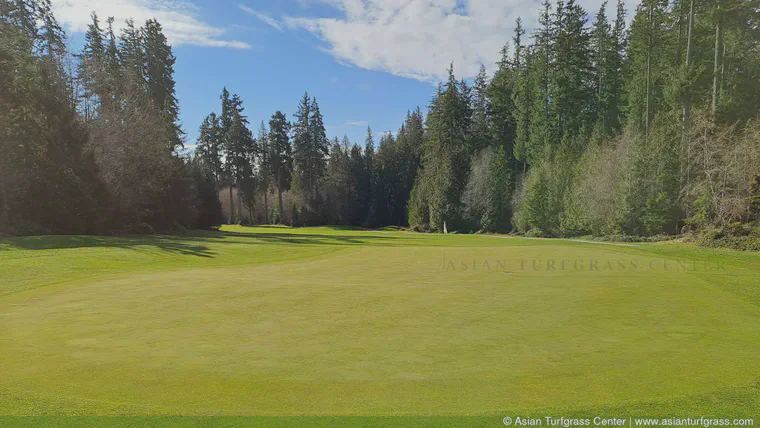
I went to Canada in March and had a chance to visit Jason Haines at Sunshine Coast Golf and Country Club (along with Tristan Tuplin at Blue Ocean). I was impressed with the quality of the playing surfaces achieved through—how to describe it—attention to fundamentals and managing the growth rate. Jason and I had a talk about this. Watch and see more in this video.
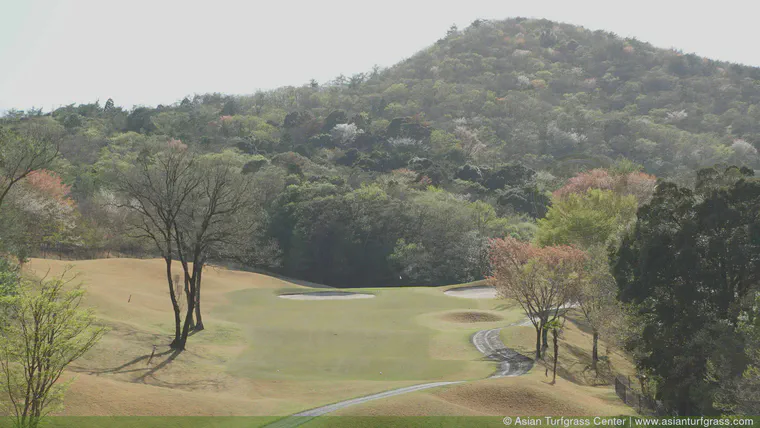
Late March and early April are a great time to be in Japan. There are a lot of cherry trees (sakura) in bloom, and in the mountains, there are a lot of mountain cherries (yamazakura) in bloom before all the leaves come out on the trees. I was at Inasa GC on a sunny spring afternoon and I enjoyed seeing the fine turfgrass conditions and a lot of cherry blossoms.
One note about the conditions at Inasa GC: the creeping bentgrass greens were fertilized with nitrogen at a rate of 6 g/m2 (that’s 1.2 pounds per 1,000 square feet) in 2022. At the time this photo was taken at the end of March, the greens had been fertilized with less than 0.5 g/m2 (less than 0.1 pounds per 1,000) in the first three months of the year, while the course had seen 9,400 rounds. I’ve learned that grass can often produce a better surface that I would have expected, and be tolerant of more foot traffic than I realized was possible, with less N fertilizer than I thought was necessary. I encourage measuring the amount of clippings to figure out how much you need the grass to grow.
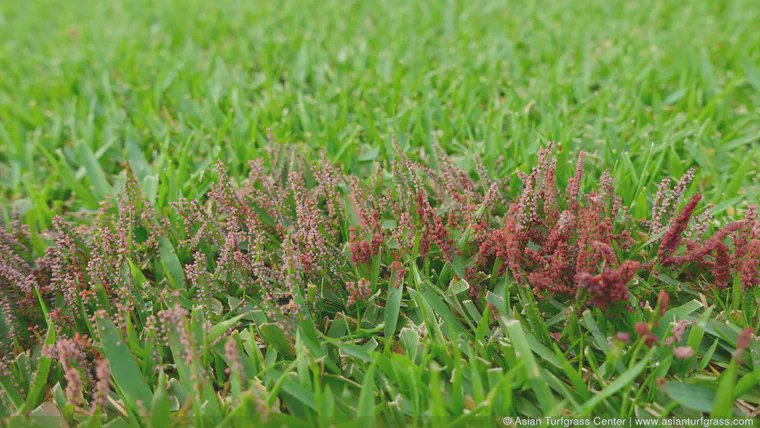
I traveled around Japan in July collecting performance data and a lot of soil and leaf tissue samples. I saw a few interesting pests, including slime molds of various colors on a Zoysia fairway in Hyogo prefecture at the end of the rainy season.
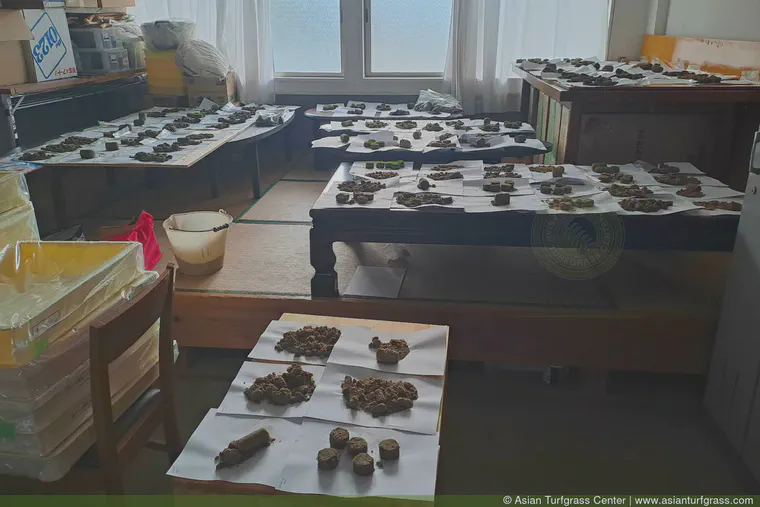
I collected a lot of soil samples and had help from many greenkeepers and companies in Japan to help organize this. All the samples eventually made their way to the Keya Golf Club maintenance office, where I set them out to dry before packing them and sending them to Brookside Labs for analysis.
I was looking at OM246 total organic material values for bentgrass, korai (Zoysia), and Cynodon putting surfaces. I also checked leaf nutrient content, soil nutrient content by three different sampling methods, and green speed and green firmness and bobble test and soil water content. These types of measurements help me understand what normal conditions are, and allow me to refine my recommendations about the best ways to sample.
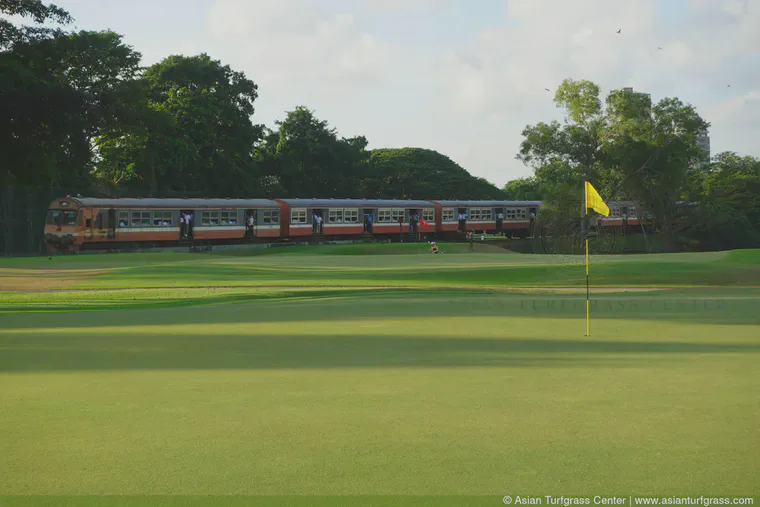
I have seen with my own eyes such improvement in the playing conditions and the course presentation at Royal Colombo Golf Club. These Tifeagle bermudagrass greens and smooth tropical carpetgrass (Axonopus compressus) fairways were looking and playing great when I visited in August.
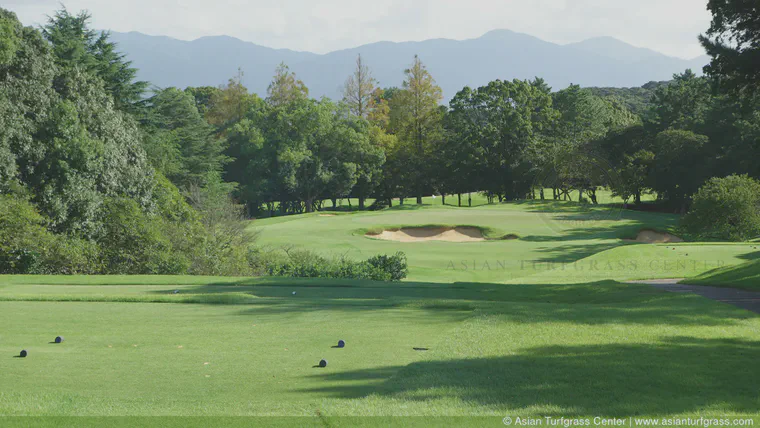
I ended up going to Japan many times in 2023, and I went to Keya GC many times too. I happened to be there for three big tournaments—the Landic Challenge in June, the KBC Augusta tournament in Augusta, and the Japan Mid-amateur in November. This was on another visit, in September, from one of my favorite locations on the property.
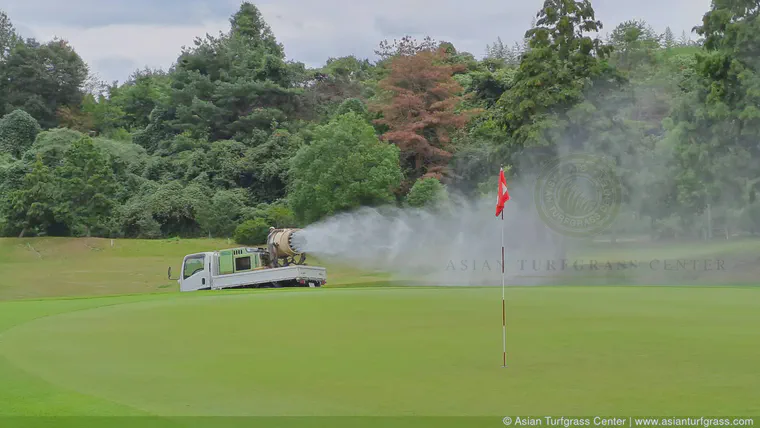
I’ve seen these sprayers in garages and parking lots and maintenance buildings, but I hadn’t seen one applying product on a golf course until a late September day in Hiroshima. This is an application of fungicide to prevent large patch disease and insecticide to control armyworms.
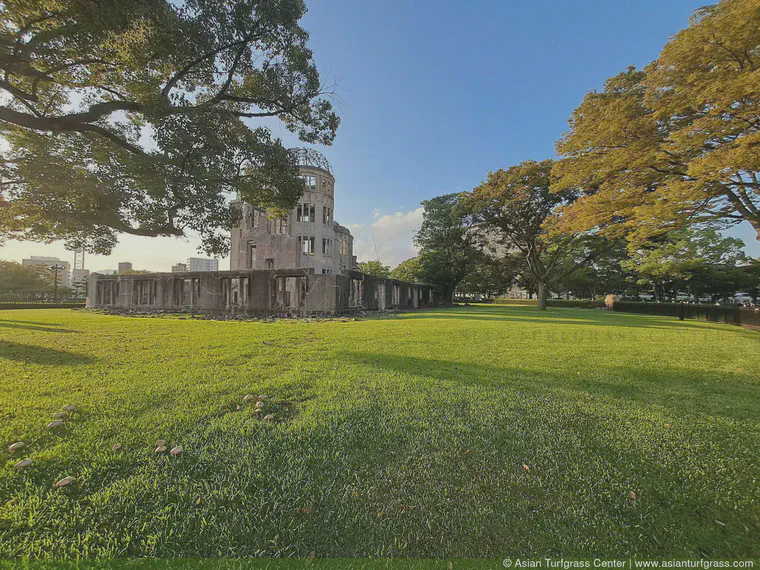
I was surprised to see that the lawn at the Atomic Bomb Dome is centipedgrass. This grass is not common in Japan, so when I see it, it’s noticeable.
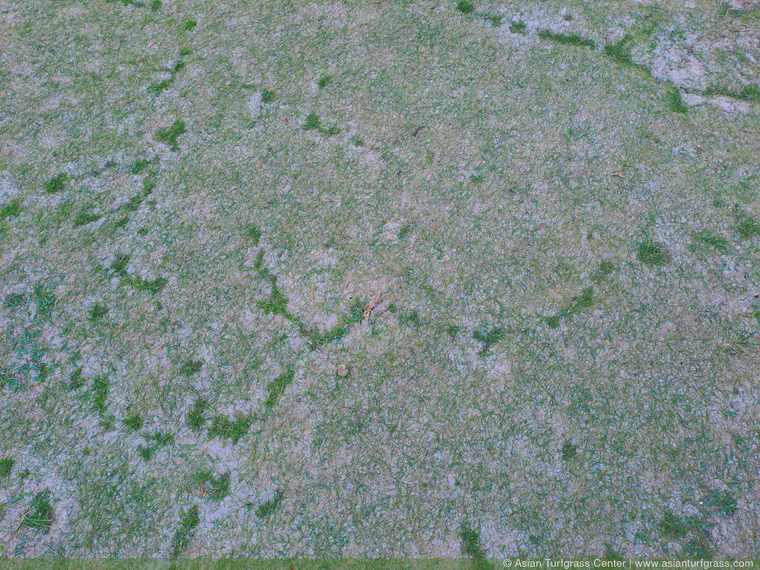
I rode a bicycle to Kondoi Beach at Taketomi Island and saw this pattern in the bicycle parking lot. The dark green stripes are ant paths. This can also happen on golf course putting greens, when hollow-tine or solid-tine cultivation is done, and the grass plants in the hole have a slightly lower crown elevation than does the surrounding turf. In such a case, the grass in the holes has more leaf area, and has a greener color. I’m not sure that actually makes it better.
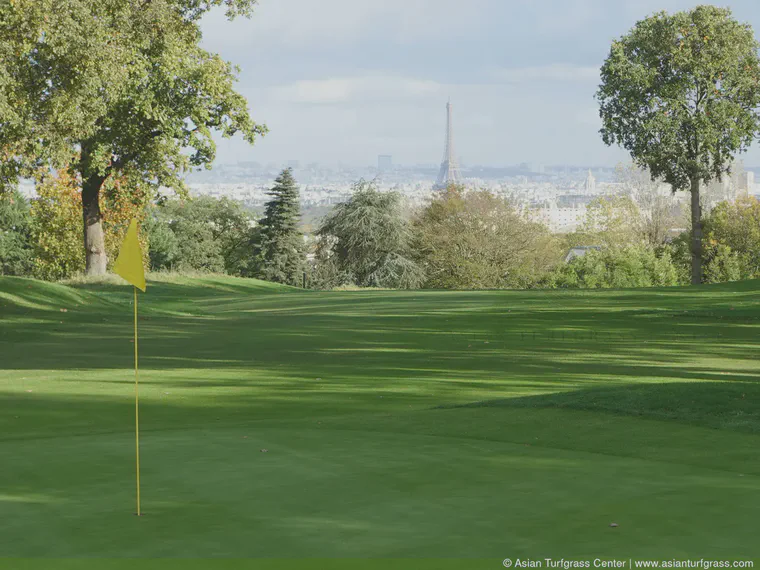
I didn’t realize there was such a view of the Eiffel Tower from a golf course until I visited Golf de Saint-Cloud in November.
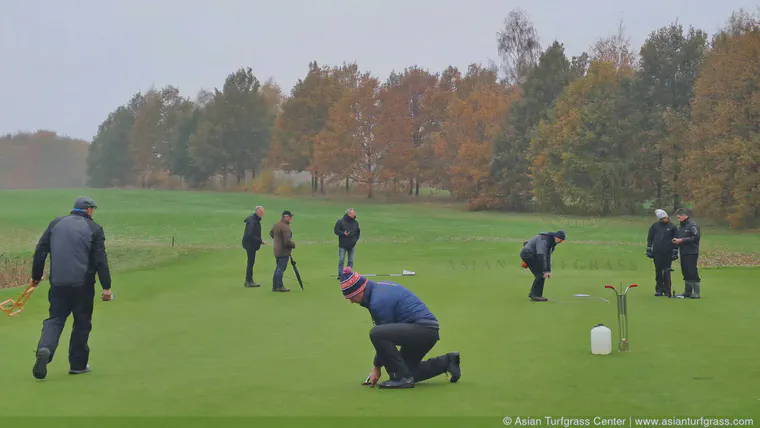
I went on the Tour de Fungus in 2023, visiting golf courses around Copenhagen and collecting data and observing turf conditions all in one day at the height of Microdochium season. What surprised me, when I looked at these greens, was how little active disease was actually present. And there wasn’t much Poa annua, either. This is notable because these greens are managed, for the most part, without pesticides. This green, for example, has not been treated with pesticides for many years, and is free of active disease.
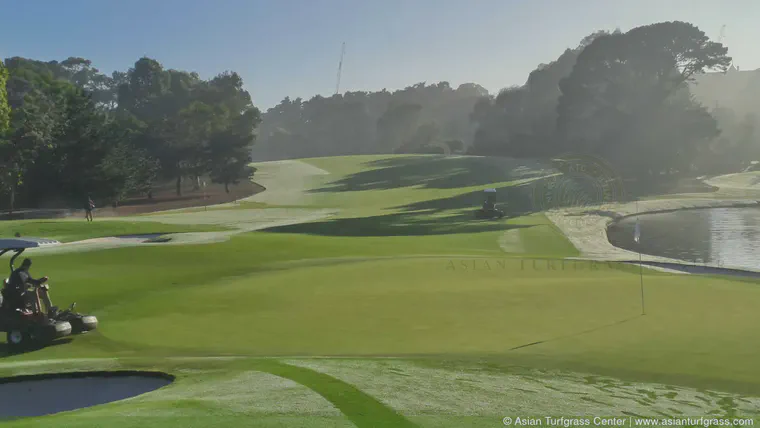
In late November and early December, I had a chance to participate in the course maintenance for the Australian Open. This was my first time at a tournament in Australia, and I had a great time making measurements, filling a few divots, and talking with turf managers from all over the world. The excellent course conditions and the fine weather and the interesting people made it a memorable week.